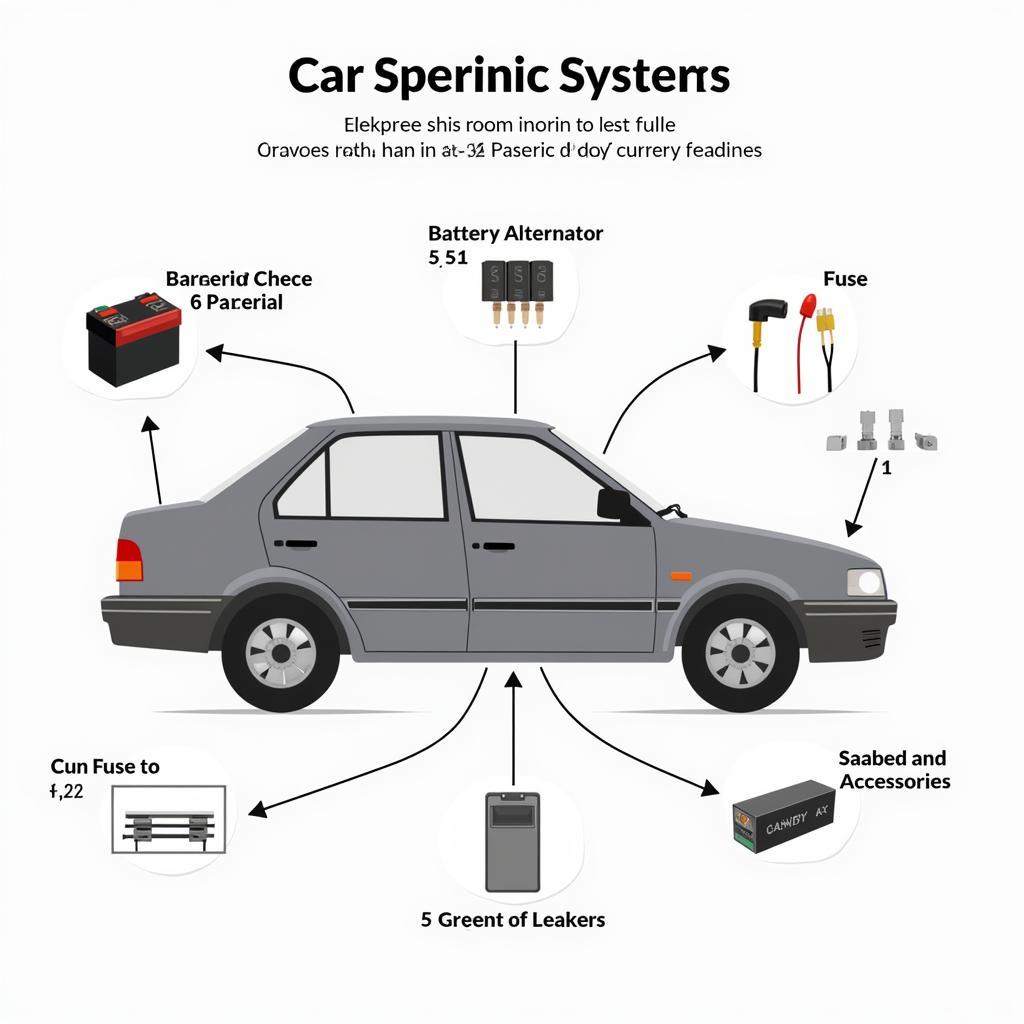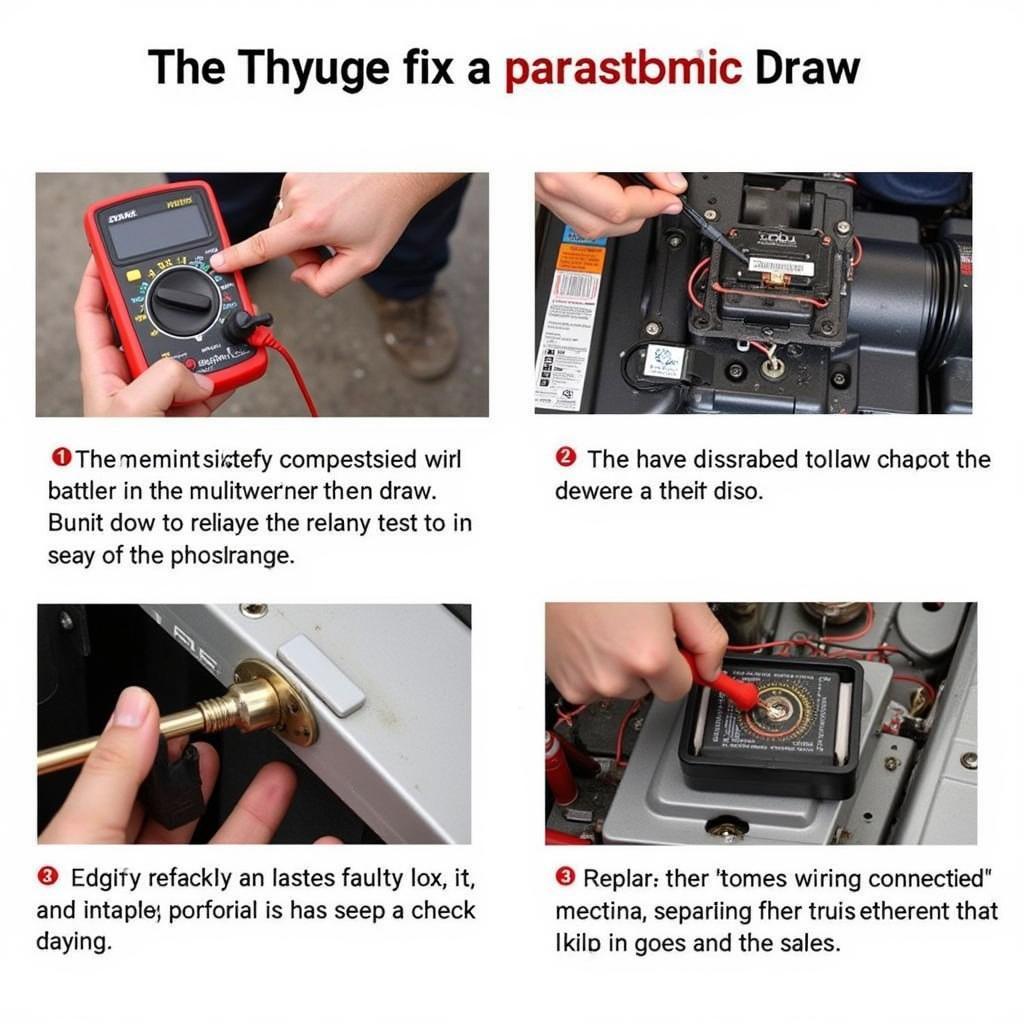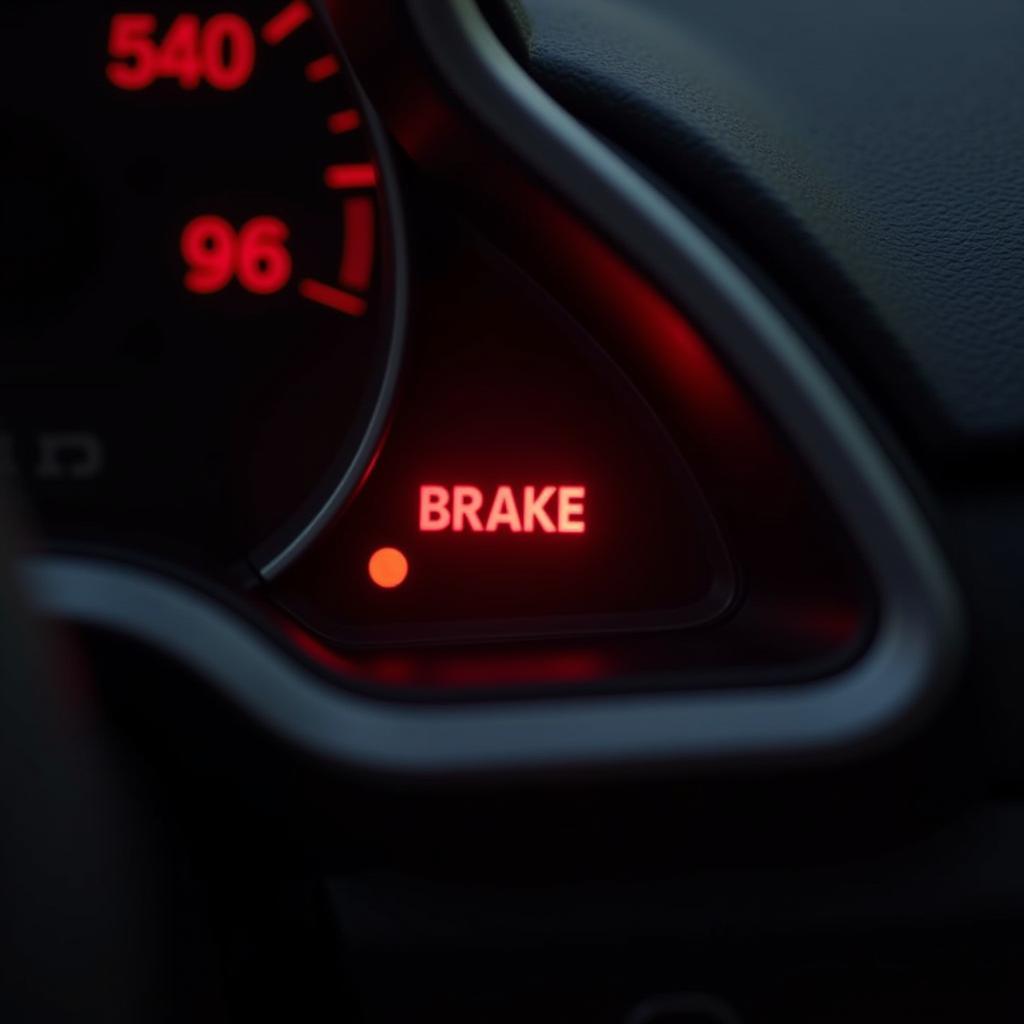Parasitic loss battery drain can be a frustrating and often elusive problem for car owners. This insidious drain slowly saps your battery’s power, leaving you stranded with a dead battery, especially after a period of inactivity. Understanding the causes, diagnosing the issue, and implementing effective solutions are key to keeping your vehicle reliably powered. my battery went flat after just a few days of not driving, and it turned out to be a parasitic draw.
What is Parasitic Loss Battery Drain?
Parasitic loss, also known as parasitic draw or dark current, refers to the gradual discharge of a car battery while the engine is off. This occurs when electrical components continue to draw power even after the ignition is switched off. While some current draw is normal to maintain essential systems like the clock and security alarm, excessive parasitic drain can quickly deplete your battery.
A small amount of current draw is normal, typically around 20-50 milliamps. However, a parasitic drain significantly higher than this can lead to a dead battery within a few days or even hours.
Common Causes of Parasitic Loss Battery Drain
Several culprits can contribute to excessive parasitic battery drain, ranging from simple malfunctions to more complex electrical issues. Some of the most frequent causes include:
- Faulty relays: Relays are electromechanical switches that control various electrical circuits. A faulty relay can remain stuck in the “on” position, continuously drawing power.
- Malfunctioning interior lights: A door ajar switch that isn’t functioning correctly can keep interior lights on, draining the battery.
- Aftermarket accessories: Improperly installed or malfunctioning aftermarket car alarms, stereos, or other accessories can contribute to excessive drain.
- Glove compartment light: A faulty switch or a glove compartment that isn’t fully closed can keep the light on, leading to parasitic drain.
- Faulty alternator diode: A bad diode in the alternator can allow current to flow back into the battery, draining it even when the car is off.
 Car Electrical System Components Related to Parasitic Draw
Car Electrical System Components Related to Parasitic Draw
Diagnosing Parasitic Loss Battery Drain
Identifying the source of parasitic drain requires some basic tools and a methodical approach. Here’s a step-by-step guide to help you diagnose the problem:
- Gather your tools: You’ll need a multimeter, a test light, and some basic hand tools.
- Measure the parasitic draw: With the ignition off and all accessories turned off, disconnect the negative battery cable. Connect the multimeter in series between the negative battery terminal and the negative battery cable. Observe the reading on the multimeter. A reading above 50 milliamps suggests a parasitic drain.
- Isolate the circuit: One by one, remove fuses from the fuse box while observing the multimeter reading. A significant drop in the reading indicates the circuit with the parasitic draw.
- Pinpoint the culprit: Once you’ve identified the circuit, use a wiring diagram to identify all components within that circuit. Test each component using the multimeter or test light to isolate the faulty component.
“Accurate diagnosis is crucial when dealing with parasitic drain,” advises John Miller, a veteran automotive electrical technician with over 20 years of experience. “A methodical approach using the right tools can save you time and frustration.”
my new car battery is dead even though it was just installed last week! This made me realize I had a parasitic draw issue.
Fixing Parasitic Loss Battery Drain
Once you’ve identified the source of the drain, the fix can be relatively straightforward. Depending on the culprit, you might need to replace a faulty relay, fix a wiring issue, or disconnect a malfunctioning accessory. my battery was flat and I found out a faulty interior light was the culprit.
 Fixing Parasitic Draw in a Car
Fixing Parasitic Draw in a Car
“Sometimes, the simplest fix can be the most effective,” adds Miller. “A loose wire or a faulty switch can cause significant parasitic drain.” battery died while idling can also indicate a problem with the charging system, not necessarily a parasitic drain.
Conclusion
Parasitic loss battery drain can be a perplexing issue, but with a systematic approach to diagnosis and repair, you can keep your car’s electrical system healthy and avoid the inconvenience of a dead battery. Understanding the causes, utilizing the right diagnostic tools, and implementing the correct solutions can ensure your vehicle is reliably powered every time you turn the key. Don’t let parasitic loss leave you stranded! Remember to regularly check your battery’s health and address any potential drain issues promptly. car battery parasitic draw can be a real headache!

